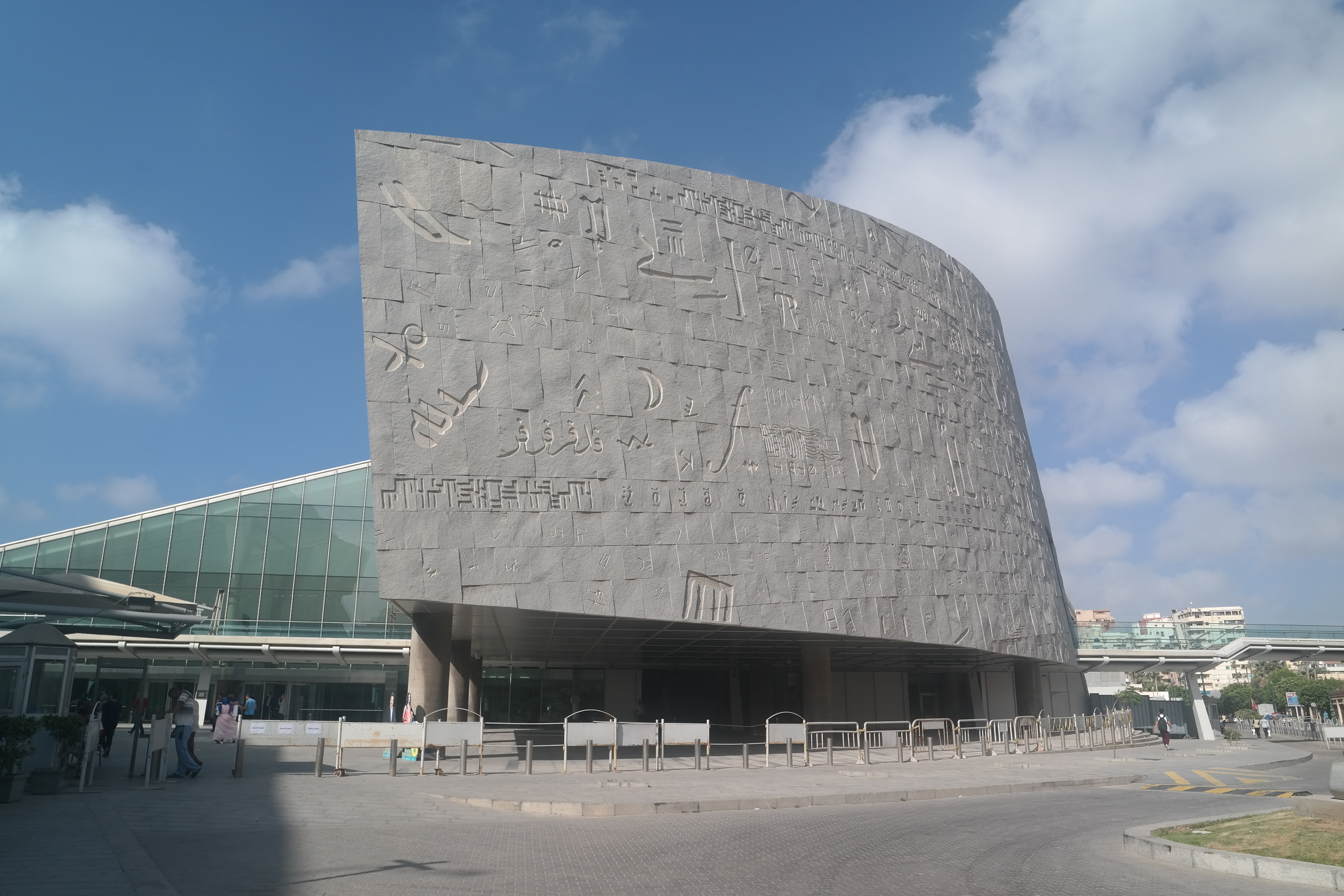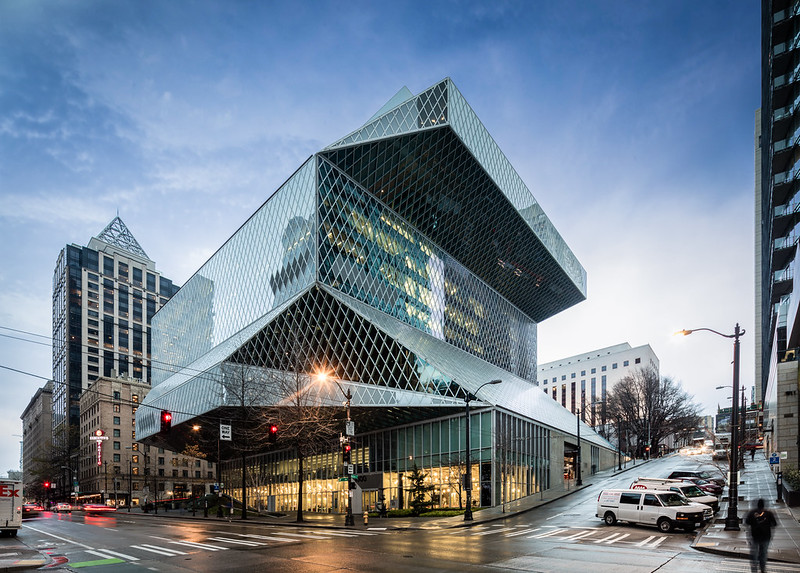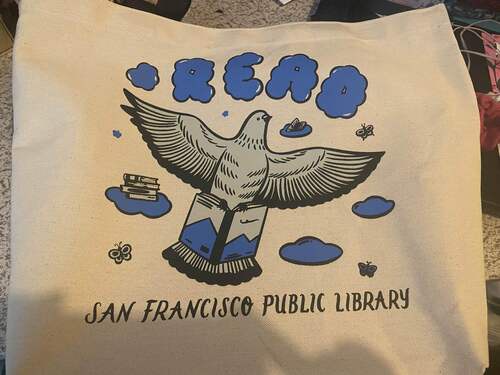A recurring theme in this model that intrigued me, especially since it was a concept that I was first introduced to in another class, is the idea of the ‘Human Library’. Could this be a new form of participatory service that more libraries consider incorporating in the future? What are the potential drawbacks of such a service? While I don’t have all the answers to these questions, I kept them in mind when exploring this idea.
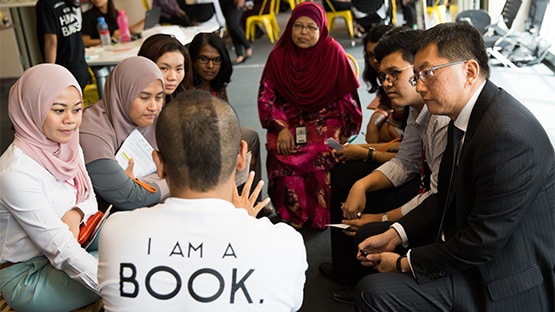
A Human Library event in Malaysia (Source)
Human libraries are an idea that first originated in Denmark in 2000, and still exist today with the trademarked nonprofit The Human Library organization (Human Library, n.d.). The first human libraries in the U.S. came about in 2008 at the Bainbridge Public Library in Washington and the Santa Monica Public Library in California (Wentz, 2013). Even the ALA sponsored a human library at their annual conference in 2011 (Wentz, 2013). The idea riffs off the idea of traditional libraries — with users being able to ‘check out’ people similar to the way they would a book for an allotted amount of time. These people constitute a pool of volunteers from all walks of life and backgrounds, often with a particular experience or perspective that is the main marketing point — such as those from a certain religion, from different countries, of different age groups, or even characteristics such as someone who partakes in a lot of body modding (Wentz, 2013).
After ‘checking out’ a person from the human library, the ‘reader’ (aka the patron who did the ‘checking out’) has a certain amount of time to have an open, frank conversation with the other person. The short-term goal is to (hopefully) “engage in meaningful dialogue with those people about their personal stories” (Ray, 2019), whereas the longer-term goals involve “get[ting] beyond assumptions and stereotypes, to ‘unjudge someone’, as the Human Library Organization’s tagline promises” (Ray, 2019). By doing this, it’s hoped that ‘readers’ may reflect on their own biases and walk away with “an increased sensitivity towards the diversity that exists beyond physical appearance” (Arne-Skidmore, 2021). While this is one of the overarching goals of the human library, ‘readers’ are also allowed to simply “ask questions, seek advice, learn about alternate perspectives, and find common ground” too (Wentz, 2013) — for the point is that, much like how libraries do not really interfere with how you consume their other resources, there will be no prescribed direction in how to go about this. It is free-form, which makes each experience unique.
Along with the aforementioned goals of the program, human libraries are often described as a boon to libraries because of the ways in which they promote gaining and exchanging ideas and information (Wentz, 2013), while also fostering a sense of community and cohesion. By providing the space for human libraries, information organizations allow a location for people to “to frankly explore ideas through one-on-one dialogues” (Wentz, 2013) from a variety of different perspectives. Additionally, by providing the opportunity for people to come together like this, the library (through the human library initiative) “shares the community with itself” (Wentz, 2013). Through the forging of these personal connections, the community can come together while also “weav[ing] the library more tightly into the fabric of the community” as well (Wentz, 2013).
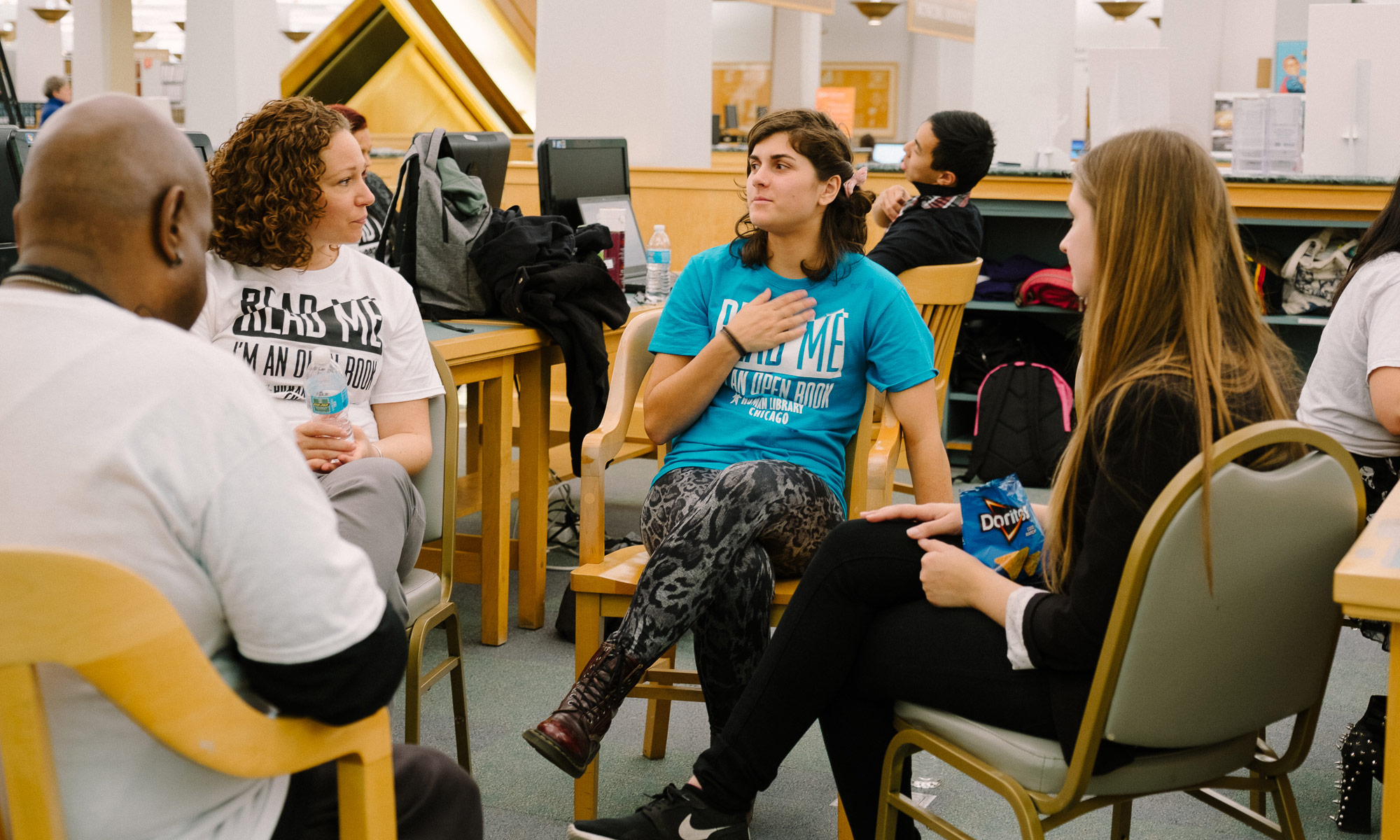
A Human Library event at Columbia College (Source)
Beyond learning of the observed benefits that human libraries seem to successfully have had in libraries, I also began to wonder about the power of stories — both in the context of human libraries and in general. For thousands of years, ever since the era of cave paintings (at the very least), we have reaffirmed that stories are a core, fundamental part of human communication methods (StoryCenter, n.d.). As a species, we almost seemed hardwired to connect and resonate with stories, and perhaps even to search for them. Biologically, we have evolved to utilize stories frequently — for survival (e.g. learning from the past) and also for community building reasons. We are a social species, after all.
There is even a neurological aspect to our enjoyment of stories. It’s been found that when we hear a story that resonates with us, our oxytocin levels increase (VanDeBrake, 2018). Oxytocin can “[boost] our feelings of things like trust, compassion, and empathy” (VanDeBrake, 2018), which then also “motivates us to work with others and positively influences our social behavior” (VanDeBrake, 2018). Higher levels of oxytocin, in this case, would set the stage well for building connections with other people. Additionally, there is an even further neurological link within storytelling. A study at Princeton University found that “during successful communication, speakers’ and listeners’ brains exhibit joint, temporally coupled, response patterns” (Stephens et al., 2010). This means that when listening to a well-told story, your brain mirrors that of the storyteller — with “the exact same areas of the brain light up on an MRI in both the storyteller and listener” (VanDeBrake, 2018). Essentially, your brain is practically reacting as if it is experiencing the story itself (VanDeBrake, 2018). Such findings show the strength in storytelling, showing how strongly they can bring forth both connection and emotions.

Cave art at Cueva de las Manos, Argentina (Source)
This power of stories, as the module is fittingly titled, leads me to think about what else libraries can do with this. Incorporating a fully-fledged human library is one such thing of course. There have been noted benefits and successes with the program — which perhaps explains why they are still utilized internationally. However, there are also a lot of other technical things to consider. If a library doesn’t partner with Denmark’s Human Library organization, how would they go about getting volunteers? Would there be a vetting process? How would we market this? How would we ensure the wellbeing of both the volunteer participants and the patron ‘readers’? All these, and more, are hypotheticals to consider when incorporating any form of a human library. But what else can we do then?
One thing that came to mind to me as an example of the power of storytelling in action online is the massive success of the Instagram account Humans of New York. The page and associated blog, started by photographer Brandon Stanton, “features portraits of strangers who share intimate stories of strength, addiction, redemption, regret, and love” (Pompliano, 2020). The page has massively blown up, amassing 12.7M followers currently, several books and a series of inspired accounts all over the world — like a “Humans of Bombay” account in Mumbai, India. What’s notable about this account is that the creator interviews random, everyday people he encounters in New York and posts pictures and a bit about their life on his page. The significant success of this account shows, according to creator Brandon Stanton, that “not only [are] the stories of ordinary people hold[ing] attention, they can be even more compelling and relatable than stories of public figures and celebrities” (Pompliano, 2020). Clearly, there is a market for people connecting with one another over shared stories.
Even in the public library sphere, there is the great example of SJSU alum Mychal Threets — known on platforms like Instagram and TikTok. Threets is known for social media content “that feature[s] book recommendations, library services, and affirming messages” (“Mychal Threets”, 2025). While Threets first cultivated his online presence after the onset of the COVID-19 pandemic, it was a TikTok video in 2023 that made him viral. In it, he “shared his experience having a child library patron ask about his gender” (“Mychal Threets”, 2025). Since then, Threets has continued to post more about his interactions with patrons — thus utilizing stories to bring a community of both those already in the LIS field and those outside of it together. He consistently emphasizes that libraries are for everyone, with one of his catchphrases being the simple, but impactful “You belong” (“Mychal Threets”, 2025). Like Mychal Threets or the Humans Of New York page, can libraries also create a positive platform to bring library communities together? Perhaps, instead of (or along with) a human library, we can follow in the footsteps of the “Humans of __” accounts and spotlight patrons who have a story they’re willing to share with the community of large. Whatever the case, I think it is important to not overlook the power of storytelling as both a means to humanize libraries and to further entrench them as a valuable cornerstone of their communities.
References:
Arne-Skidmore, E. (2021, August 4). New study on the impact of the human library. Human Library. https://humanlibrary.org/new-study-on-the-impact-of-the-human-library/
Human Library. (n.d.). About. https://humanlibrary.org/about/
Mychal Threets. (2025, February 25). In Wikipedia. https://en.wikipedia.org/w/index.php?title=Mychal_Threets&oldid=1277542973
Pompliano, P. (2020, October 20). Inside the mind of ‘Humans of New York’ creator Brandon Stanton. The Profile. https://www.readtheprofile.com/p/inside-the-mind-of-humans-of-new
Ray, M. (2019, April 12). Courageous conversations at the human library. Next Avenue. https://www.nextavenue.org/courageous-conversations-human-library/
Stephens, G. J., Silbert, L. J., & Hasson, U. (2010). Speaker–listener neural coupling underlies successful communication. Proceedings of the National Academy of Sciences, 107(32), 14425-14430. https://doi.org/10.1073/pnas.1008662107
StoryCenter. (n.d.). What listening to a story does to our brains… https://www.storycenter.org/storycenter-blog/blog/2013/8/8/what-listening-to-a-story-does-to-our-brains
VanDeBrake, J. (2018, September 27). The science of storytelling: Why we love stories. Medium. https://medium.com/swlh/the-science-of-storytelling-why-we-love-stories-fceb3464d4c3
Wentz, E. (2013, April 26). The human library: Sharing the community with itself. Public Libraries Online. https://publiclibrariesonline.org/2013/04/human_librar/











